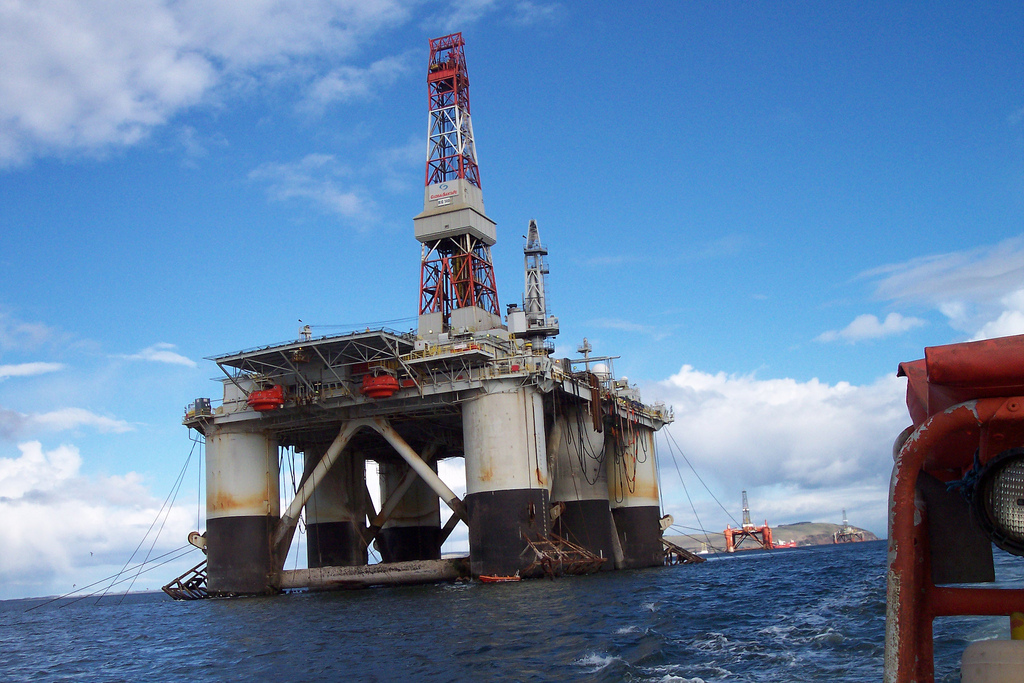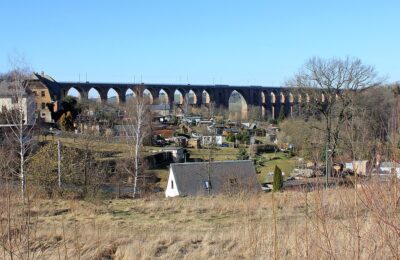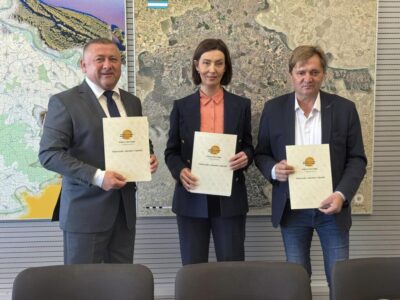North Sea offshore geothermal potential discussed at recent conference
In a recent presentation at a conference in Aberdeen, Scotland, George Lockett looked at the prospect of utilising North Sea oil platforms to extract geothermal energy once oil and gas fields are no longer economic to produce from.
In a submission to ThinkGeoEnergy, George Lockett provides an overview on the potential of utilizing geothermal energy using existing North Sea oil platforms.
Traditionally, once an oil or gas field reaches the end of its productive life, its production platform is decommissioned. The structure may be removed and taken ashore for recycling/reuse, or part of the platform may remain on the seabed, perhaps creating an artificial reef. However, another alternative is becoming a more viable option – utilising the platform to extract geothermal energy.
This could create a whole new North Sea Industry, employing 1,000’s of workers in new productive jobs, in the offshore and onshore support industries.
Geothermal power holds enormous opportunities to provide affordable, clean energy that avoids greenhouse gases like carbon dioxide CO2. Geothermal Energy is true base load, producing electricity 24/7.
The continental shelf in the UK where these platforms are situated has a relatively thin earth’s crust (about 10 km thick compared to 40–70 km thick on land), giving the wells high bottom-hole temperatures. Typical Geothermal Gradients of 35 degrees C/km have been recorded in the continental shelf crust.
Elgin-Franklin is the world’s largest high-temperature / high-pressure (HT/HP) development. A new, record-breaking well was drilled to a depth of 6,100m with a temperature of 197 degrees C (387 degrees F) and a pressure of 16750 psi (1,155 bar).
Heat from these wells can be utilised to generate electricity on board the platform that can be sent to the national grid via subsea cables. North Sea platforms have the advantage of being surrounded by cold sea water, which is at a much lower temperature than the onshore air cooling towers that are the conventional means of condensing a generating plant’s working fluids after they have passed through the turbines.
It is also possible to reinject the waste heat remaining in the fluids back to the oil bearing level in order to increase field pressure and flows, thereby enhancing secondary oil recovery and extending field life. Furthermore, it is also possible to discover lower oil fields when drilling to greater depths to tap the geothermal energy under the platforms.
Geothermal energy could have the potential to extend the life of North Sea rigs and platforms by a further 30 years — Concrete Structures have a 300 Year Life — both by being used for electrical power generation and by bringing geothermal heat from a lower level to heat up oil fields to help recover heavier tar oils.
If it makes economic sense to connect the UK to France by cables to utilise cheap French nuclear power, then it must also make economic sense to connect these platforms to the mainland to utilise geothermal power.
“Interconnectors in North West Europe will lead to electricity flows following the rules of supply and demand. So it will flow where it is needed, which is good for our security of supply,” the UK’s Department of Energy and Climate Change (DECC) said.
There are five power plant designs considered, the PureCycle Power system (Pratt & Whtiney Power Systems) based on ORC, Single scre turbine by Turboden, twin screw turbine design from Lagson Energy, Hydraulic thermal engine from Deluge and Kalina Cycle of Global Geothermal.
Video of the Presentation about Geothermal in the North Sea Oil and Gas Industries here is the link:
http://www.youtube.com/watch?v=MPj843lu7GE
Slides of Presentation:
http://www.all-energy.co.uk/Userfiles/File/0915_George_Lockett_Room_18-20_Thurs-24-May.pdf
For more details regarding the research project, contact the author at eMail: george.lockett39@gmail.com


















